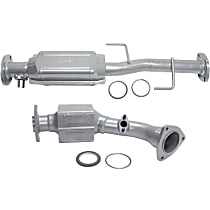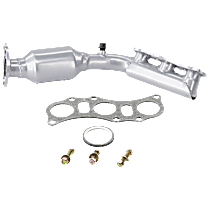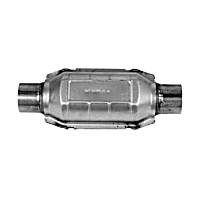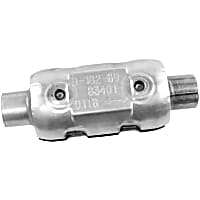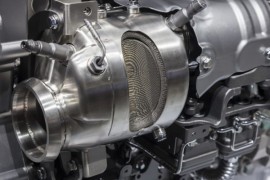{
"lazyNodes": false,
"abFitnotesFlag": false,
"abCrawlReviews": false,
"productOptionsCookie": false,
"orderDelayFlag": false,
"skipSessionCookie": false,
"covidMessage": false,
"fullTitleCookie": false,
"nrLoggerCookie": false,
"checkoutReviewCookie": false,
"productOptionSeqCookie": false,
"maintenanceFlag": false,
"bufferETACookie": false,
"multiShippingDiscountFlag": false,
"newFitmentFlag": false,
"surveyOptInFlag": false,
"crossSellFlag": false,
"skuMappingFlag": false,
"paySplitCookie": false,
"callDisableFlag": false,
"zipPaymentFlag": "u",
"hassleFreeReturn": false,
"lifetimeReplacement": false,
"cpn_off": false
}Toyota 4Runner Catalytic Converters
Shop Catalog
![]() WARNING: This product can expose you to chemical which is known to the State of California to cause cancer and birth defects or other reproductive harm. For more information go to www.P65Warnings.ca.gov.
WARNING: This product can expose you to chemical which is known to the State of California to cause cancer and birth defects or other reproductive harm. For more information go to www.P65Warnings.ca.gov.
![]() WARNING: This product can expose you to chemical which is known to the State of California to cause cancer and birth defects or other reproductive harm. For more information go to www.P65Warnings.ca.gov.
WARNING: This product can expose you to chemical which is known to the State of California to cause cancer and birth defects or other reproductive harm. For more information go to www.P65Warnings.ca.gov.
![]() WARNING: This product can expose you to chemical which is known to the State of California to cause cancer and birth defects or other reproductive harm. For more information go to www.P65Warnings.ca.gov.
WARNING: This product can expose you to chemical which is known to the State of California to cause cancer and birth defects or other reproductive harm. For more information go to www.P65Warnings.ca.gov.
![]() WARNING: This product can expose you to chemical which is known to the State of California to cause cancer and birth defects or other reproductive harm. For more information go to www.P65Warnings.ca.gov.
WARNING: This product can expose you to chemical which is known to the State of California to cause cancer and birth defects or other reproductive harm. For more information go to www.P65Warnings.ca.gov.
![]() WARNING: This product can expose you to chemical which is known to the State of California to cause cancer and birth defects or other reproductive harm. For more information go to www.P65Warnings.ca.gov.
WARNING: This product can expose you to chemical which is known to the State of California to cause cancer and birth defects or other reproductive harm. For more information go to www.P65Warnings.ca.gov.
![]() WARNING: This product can expose you to chemical which is known to the State of California to cause cancer and birth defects or other reproductive harm. For more information go to www.P65Warnings.ca.gov.
WARNING: This product can expose you to chemical which is known to the State of California to cause cancer and birth defects or other reproductive harm. For more information go to www.P65Warnings.ca.gov.
![]() WARNING: This product can expose you to chemical which is known to the State of California to cause cancer and birth defects or other reproductive harm. For more information go to www.P65Warnings.ca.gov.
WARNING: This product can expose you to chemical which is known to the State of California to cause cancer and birth defects or other reproductive harm. For more information go to www.P65Warnings.ca.gov.
![]() WARNING: This product can expose you to chemical which is known to the State of California to cause cancer and birth defects or other reproductive harm. For more information go to www.P65Warnings.ca.gov.
WARNING: This product can expose you to chemical which is known to the State of California to cause cancer and birth defects or other reproductive harm. For more information go to www.P65Warnings.ca.gov.
![]() WARNING: This product can expose you to chemical which is known to the State of California to cause cancer and birth defects or other reproductive harm. For more information go to www.P65Warnings.ca.gov.
WARNING: This product can expose you to chemical which is known to the State of California to cause cancer and birth defects or other reproductive harm. For more information go to www.P65Warnings.ca.gov.
![]() WARNING: This product can expose you to chemical which is known to the State of California to cause cancer and birth defects or other reproductive harm. For more information go to www.P65Warnings.ca.gov.
WARNING: This product can expose you to chemical which is known to the State of California to cause cancer and birth defects or other reproductive harm. For more information go to www.P65Warnings.ca.gov.
![]() WARNING: This product can expose you to chemical which is known to the State of California to cause cancer and birth defects or other reproductive harm. For more information go to www.P65Warnings.ca.gov.
WARNING: This product can expose you to chemical which is known to the State of California to cause cancer and birth defects or other reproductive harm. For more information go to www.P65Warnings.ca.gov.
![]() WARNING: This product can expose you to chemical which is known to the State of California to cause cancer and birth defects or other reproductive harm. For more information go to www.P65Warnings.ca.gov.
WARNING: This product can expose you to chemical which is known to the State of California to cause cancer and birth defects or other reproductive harm. For more information go to www.P65Warnings.ca.gov.
![]() WARNING: This product can expose you to chemical which is known to the State of California to cause cancer and birth defects or other reproductive harm. For more information go to www.P65Warnings.ca.gov.
WARNING: This product can expose you to chemical which is known to the State of California to cause cancer and birth defects or other reproductive harm. For more information go to www.P65Warnings.ca.gov.
![]() WARNING: This product can expose you to chemical which is known to the State of California to cause cancer and birth defects or other reproductive harm. For more information go to www.P65Warnings.ca.gov.
WARNING: This product can expose you to chemical which is known to the State of California to cause cancer and birth defects or other reproductive harm. For more information go to www.P65Warnings.ca.gov.
![]() WARNING: This product can expose you to chemical which is known to the State of California to cause cancer and birth defects or other reproductive harm. For more information go to www.P65Warnings.ca.gov.
WARNING: This product can expose you to chemical which is known to the State of California to cause cancer and birth defects or other reproductive harm. For more information go to www.P65Warnings.ca.gov.
Top Rated Products
Product Questions & Answers
Customer Guides
Best Maintenance Practices for the Toyota 4Runner Catalytic Converter
The catalytic converter of your Toyota 4Runner is designed in such a way that the only time you'll do any tinkering is when it breaks down due to wear. And the best way to delay the wearing out of your catcon is to provide it with regular maintenance. Toyota 4Runner catalytic converter maintenance can be quite simple, as it generally revolves around responsible driving practices and constant monitoring. And to help you get started, here are the best practices on how to take care of your SUV's catalytic converters:
- Don't let the engine overheat.
An overheating engine can do more than just shorten its own lifespan. Misfires and premature detonation caused by running the engine at higher-than-normal temperatures will melt the ceramic substrate and matting inside the converter. So once the temp indicator in your dashboard hits the high notes, let the engine cool down immediately. If you find your SUV running hot constantly especially when idling, have the engine and the cooling system checked by a mechanic.
- Replace the engine oil on a regular basis.
Engine oil tends to get foul over time, and when this happens it will cause the valves and piston rings to wear down and allow oil to seep through. The oil will eventually reach the catalytic converter, destroying the catalyst and causing a thick, bluish smoke to come out of the exhaust pipe. The replacement interval of the engine oil in your 4Runner depends on the brand and viscosity of the oil, so make sure to refer to its container for instructions. In addition, if you suspect the engine valves and pistons are leaking oil, have the engine undergo a compression or leak test for a proper diagnosis.
- Keep silicone sealant away.
Silicone sealant is normally used to seal the exhaust manifolds and headers, which tends to burn up when exposed to high temperatures. When this happens, the silicone turns into gas that coats the oxygen sensor, resulting in a condition called "outgassing", which can cause the converter to overheat. To avoid this, do not use silicone sealant or other silicone-based products around the exhaust side of the engine.
Replacing the catalytic converter of the Toyota 4Runner is a task that happens rarely, but it's also something that must not be put off. Designed to minimize the pollutants found in exhaust gas, the catalytic converter is key to maintaining your vehicle's fuel emissions at acceptable levels, so without it, the vehicle will no longer be roadworthy. You can normally have the catalytic converter replaced in an auto repair shop, but this can be quite expensive. So if you have the necessary tools and equipment at home and some experience in replacing auto components, you can save a lot of money by installing the converter yourself. And to help you, here are some key tips you can follow when installing a new Toyota 4Runner catalytic converter:
Tip #1: Get a replacement converter that complies with the emissions laws of your state.
Before you can mount a new catalytic converter in your SUV, make sure it follows the state's emissions laws. A vehicle with the wrong type of catalytic converter will still not be considered street-legal, so you need to do your homework first before you purchase a converter. To determine the right type of converter for your vehicle, you need to refer to the Emissions Control Information Label, which is affixed inside the engine. You should also consult with your state regulations regarding aftermarket replacement converters. California, for instance, has a stricter set of rules for catalytic converters than other states.
Tip #2: Allow the engine to cool down before starting.
It seems obvious but it's worth repeating: the catalytic converter and the surrounding pipes can get extremely hot while the engine is running, so allow them to cool down first before touching them to avoid serious burns. The catalytic converter and pipes should cool down after several minutes, although it's still recommended to wear a pair of heavy mechanic's gloves before working on the exhaust system components.
Tip #3: Remove the bolts properly.
Starting with the bolts at the back of the converter—the ones closest to the open end of the exhaust—will put less strain on the pipes than if you started with the bolts at the front. Make sure to use the right size of wrench to loosen and remove the bolts.
How can a damaged oxygen sensor affect a Toyota 4Runner catalytic converter?
Oxygen sensors and catalytic converters work closely with each other, but they have separate functions. The sensor evaluates the amount of oxygen in the exhaust and acts as an indicator if the air-fuel mixture is just right or inadequate. So when an oxygen sensor is broken, it does not necessarily follow that it will have a direct effect on the converter's performance. But failure to replace the sensor may eventually cause damage to the converter.
How much would the repair cost be for a damaged Toyota 4Runner catalytic converter?
It depends if you are going to do the repair yourself or hire a mechanic to do the job. Of course, it's cheaper if you do it yourself. The price of Toyota 4Runner cats ranges from $50 to $400. But if you opt to go to a repair shop, you would have to factor in the expense of labor fees.
What are the causes of a poisoned Toyota 4Runner catalytic converter?
One of the reasons for a catalytic converter failure is when it has become poisoned. The usage of leaded fuel or fuel additives that have lead is one of the causes of this poisoning. Defective engine sensors, failure in the engine system, and an out-of-tune engine can also contribute to the poisoning of a Toyota 4Runner catalytic converter. As a result, the converter loses its ability to efficiently manage emissions.
What are the ways of diagnosing a broken Toyota 4Runner catalytic converter?
One way of testing the catalytic converter for defects is by removing the oxygen sensor and noting if there have been changes in the car's performance. If the performance seems to have become poor, the cats already need replacement. Another way is to measure the exhaust backpressure with a vacuum gauge or a pressure gauge. Simply connect the gauge to the converter through the emission test port or an adapter in the opening of the oxygen sensor. For the vacuum gauge, the engine vacuum should be measured at curb idle and at 1600 RPM. If the vacuum is gauged at 21 inches at curb idle and 15 inches at 1600 RPM, the converter is definitely defective and needs to be replaced.








